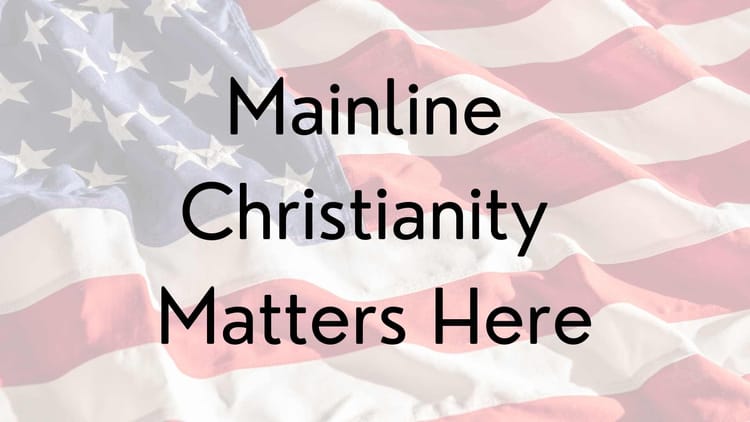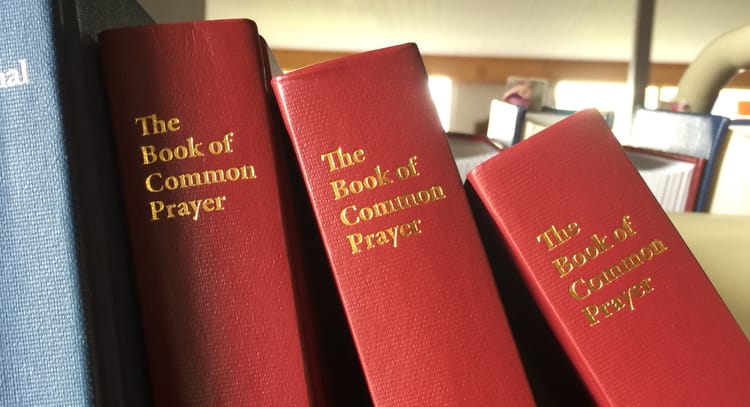Congregational Sustainability Roundup

Acknowledging that some churches will not exist in twenty years leads us to ask, “What can we do now to enable the gospel to be preached and the sacraments offered twenty years from now, in as many ways and places as possible?”
And that is a fascinating question.
Following up on my last post, I’ve decided to collect documents and resources for this conversation, and put them in one location so others can find them more easily than I did. I’ll probably make a separate page for this at some point, but starting with a blog post seems like a good beginning. This post focuses on the Episcopal Church with some ecumenical resources included as well.
Where are people talking about these questions?
There’s a place on Facebook: the Congregational Seasons Facebook Group. This is the only place I’ve found where church closings are openly discussed. It’s an ecumenical group and there are frequent news items. (The most poignant recent posting: Seven reasons (among many) why my church died.) The Rev. Joseph Duggan founded this group and is a frequent poster; he doesn’t have a blog but I’m recruiting him as a guest poster.
The Rev. L. Gail Irwin recently published a book called Toward the Better Country: Church Closure and Resurrection. She reflects on questions of congregational sustainability on her blog, and her essay on churches and bridges is a must-read. Here’s the quote that made me stand up and cheer: “[t]he decay of the Mainline church… was not merely about the changing culture. It was also about us: the flawed structure of our institutions.” Her blog is a place to reflect together on these questions.
What about on the denominational level?
In the Episcopal Church on the (inter)national level, the missio:engage program supports ministry redevelopment. This community of practice offers a monthly conference call for leaders of congregations in decline seeking revitalization. Churches can learn more about their immediate context through the Episcopal Church’s Studying Your Congregation and Community page.
The Episcopal Church Building Fund sponsors public conversation about church decline and renewal, particularly for congregations who would like to find ways to use their facilities to serve their mission. They have developed a process “to help congregations who have building space, but who are struggling financially to make ends meet.” There’s a ton of information on their website, and they host an annual conference as well.
(As an aside, wouldn’t it be lovely to use some of our plentiful Episcopalian resources for more than this? The Disciples of Christ have “New Beginnings,” a program to help congregations with self-assessment and turnaround. It “helps congregations in decline assess their strengths and opportunities” as they seek to serve God. Other denominations including the Presbyterians are now using the program as well. Why not the Episcopalians?)
How do dioceses approach the question of church closure?
So far I’ve discovered three dioceses of the Anglican Communion that have developed documents directly addressing church closure.
1) In 2004, the Anglican Diocese of Toronto developed a policy which guides diocesan-level conversation not only on church closing but also on designating which parishes receive diocesan-level support. It can be downloaded here: sustainable_and_strategic_ministry_policy. The July 2010 issue of the Church of England’s Resourcing Mission Bulletin contains an update from the staff of the diocese with further details on how the policy is used in the diocese.
Here’s a particularly useful graphic from that document, which maps churches into quartiles: are they sustainable, unsustainable, strategic, or static? The answer depends on two variables: mission and resources. This graphic is worth a post in itself; I reproduce it here to engage your curiosity in reading the whole document, which also contains a benchmarking process for congregations to consider as they determine their futures.

2) In 2007, the Diocese of Massachusetts published a resource called “Viability, Vitality, and Mutuality: A Covenant and Characteristics for Congregations Growing in Mission.” It can be downloaded here: Vitality_Viability_Mutuality_2007. It contains an ambitious list of characteristics of vital congregations. For the purposes of this post, the most interesting part of this document is the list of characteristics of viable parishes, which is short and reasonable: leadership positions are filled with regular turnover; salaries and the diocesan apportionment are paid; there’s an annual pledge drive, budget process, parochial report and audit; bylaws are reviewed every three years and the church property is being maintained. (A critic would notice that corporate worship is not on this list of required characteristics, but this is a roundup post, not an analysis.) There is no process described through which congregations assess themselves; one assumes they use the viability characteristics as a checklist.
3) The Diocese of Connecticut publishes “Closing Procedures for Churches,” outlining the process for closing a church in that diocese. This reads like a checklist, not a policy; it is simply a description of the tasks necessary for an appropriate dissolution. This document can be downloaded here: ClosingChurchesProcedures.
Of these three dioceses, the only one which has published significant strategic work integrating church closings into a strategy for long-term ministry is the Diocese of Toronto. Congratulations to the Canadians! The Dioceses of Connecticut and Massachusetts are far ahead of the rest of the Episcopal Church (which is largely leaving these questions unaddressed), so congratulations to them too.
Is there any good news?
Any community that proclaims the resurrection of Christ has good news. I’m particularly interested in the Rivendell Plan, through which clergy are enabled to serve small and struggling congregations. From the site:
Rivendell wants to expand the Church’s ability to provide skilled, well-educated, energetic and devoted priestly leadership, particularly in less affluent, struggling churches, through the work of Community priests and lay Companions who are called both to this ministry and to religious community, with the simplicity of life, profound commitment, and mutual loving support which make it feasible.
That’s what I’ve found so far. I’m sure there’s more! Help me out here please:
Did this list help you?
What is missing from this list (within and beyond the Episcopal Church)?





Member discussion